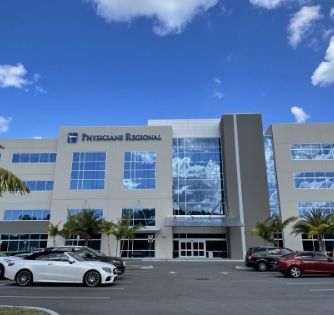With attention to some unique patient characteristics, breast reduction surgery achieves good aesthetic outcomes in bodybuilders with gynecomastia—enlargement of the male breast, according to a report in the February issue of Plastic and Reconstructive Surgery®, the official medical journal of the American Society of Plastic Surgeons (ASPS).
ASPS Member Surgeon Mordcai Blau, MD, a plastic surgeon in private practice in White Plains, N.Y., reviews his extensive experience with gynecomastia surgery in bodybuilders. He highlights key patient characteristics and technical issues, including the causal role of anabolic steroids and hormone supplements. Dr. Blau’s coauthor was Ron Hazani, MD, a plastic surgeon in Beverly Hills, Calif.
Focus on Gynecomastia Surgery in Bodybuilders
An expert in male breast reduction, Dr. Blau has performed gynecomastia surgery in nearly 1,600 bodybuilders and other patients with “good physique.” The new report focuses on 1,073 such patients, followed up for one to five years after surgery.
The men ranged in age from 18 to 51 years; 15 percent were competitive bodybuilders. All were free of hormonal or other diseases that can cause gynecomastia. In some cases, gynecomastia developing in adolescence—usually a temporary condition—became permanent after the patient started using steroids or hormone-containing supplements.
For several reasons, gynecomastia surgery in bodybuilders calls for a different approach, Dr Blau believes. In contrast to other groups of gynecomastia patients, who tend to be overweight or obese, bodybuilders usually don’t need removal of excess fat or skin.
However, they do need special attention to prevent bleeding and scarring. Bleeding risk is higher because of increased blood flow in the highly developed chest muscles. Steroids and unregulated supplements including protein shakes, vitamins, and fish oils may also increase bleeding risk.
Emphasis on Complete Removal of Breast Gland Tissue
Bodybuilders are “perfectionists with regard to their physique and chest aesthetics; hence their level of expectations is higher,” Dr Blau writes. He performs the procedure through a one-inch incision, made on the underside of the areola surrounding the nipple.
In outlining his surgical technique, Dr. Blau highlights the need for complete removal of all breast gland tissue. After surgery, pathology reports usually show excessive development (hypertrophy) of the gland tissue, although a few patients had precancerous cells.
Most patients are “extremely satisfied” with their surgical results, Dr. Blau reports. He also notes that the “vast majority” of patients continued to use anabolic steroids. Because the gland was completely removed, there were no problems with recurrent gynecomastia.
Complications were uncommon and generally minor. There was a six percent rate of hematomas—blood collections causing pain, swelling, and bruising. Dr. Blau notes this problem became less common after he began providing stricter instructions regarding preoperative and postoperative care: stopping all use of steroids and supplements before surgery, and resuming exercise gradually after surgery.
Plastic surgeons may see increased interest in gynecomastia surgery among bodybuilders and other men with good physique, Dr. Blau believes. He suggests that surgeons performing gynecomastia surgery start with simpler cases, before proceeding to the more-challenging demands presented by bodybuilders.
While many men are affected by gynecomastia, most don’t seek treatment, according to this month’s introductory video by Rod J. Rohrich, MD, Editor-in-Chief, on the Plastic and Reconstructive Surgery website. The February issue also reports on a new technique for men seeking breast reduction after massive weight loss. “In these two papers, we see how the surgical treatment of Gynecomastia can improve both aesthetics and patients’ quality of life,” Dr. Rohrich comments. “Plastic surgeons are constantly studying and refining these surgical techniques to create the safest, most effective procedure possible.”
Plastic and Reconstructive Surgery® is published by Lippincott Williams & Wilkins, part of Wolters Kluwer Health.
About Plastic and Reconstructive Surgery
For more than 60 years, Plastic and Reconstructive Surgery (PRS)® has been the one consistently excellent reference for every specialist who uses plastic surgery techniques or works in conjunction with a plastic surgeon. The official journal of the American Society of Plastic Surgeons, PRS brings subscribers up-to-the-minute reports on the latest techniques and follow-up for all areas of plastic and reconstructive surgery, including breast reconstruction, experimental studies, maxillofacial reconstruction, hand and microsurgery, burn repair, and cosmetic surgery, as well as news on medico-legal issues.

